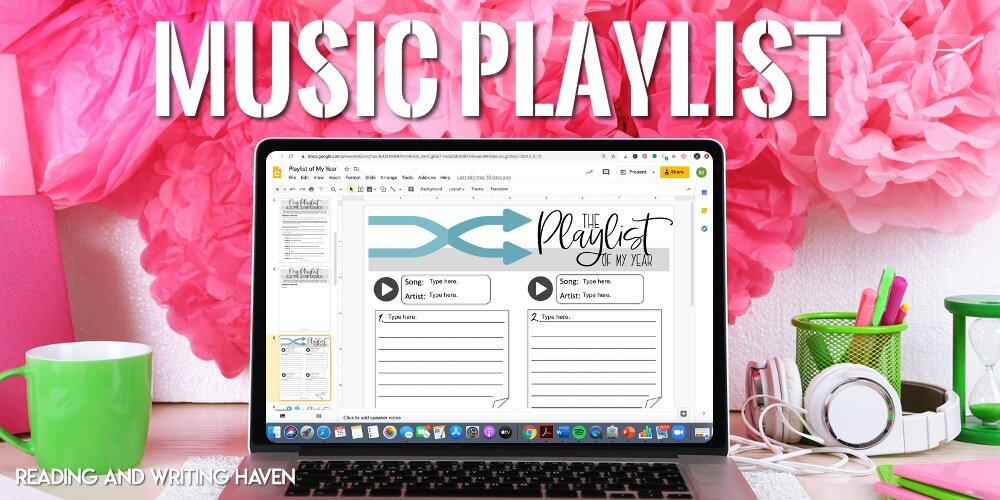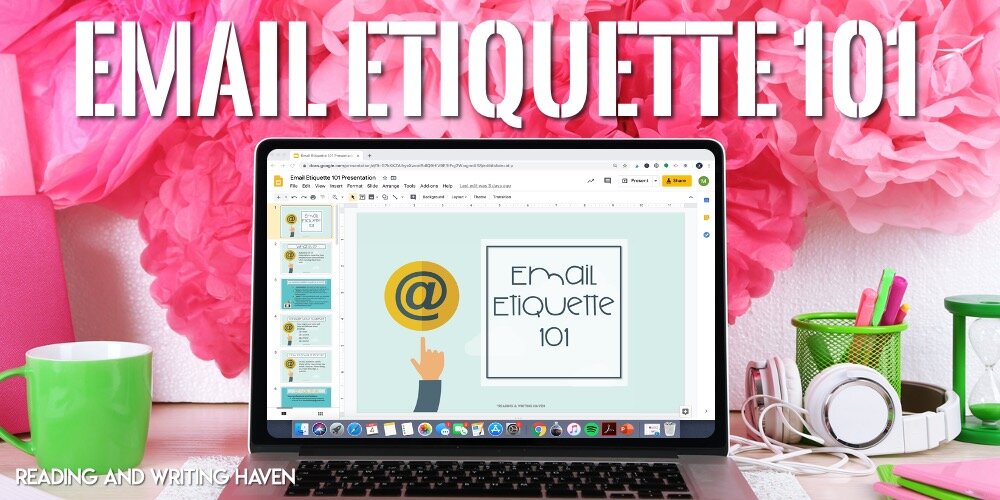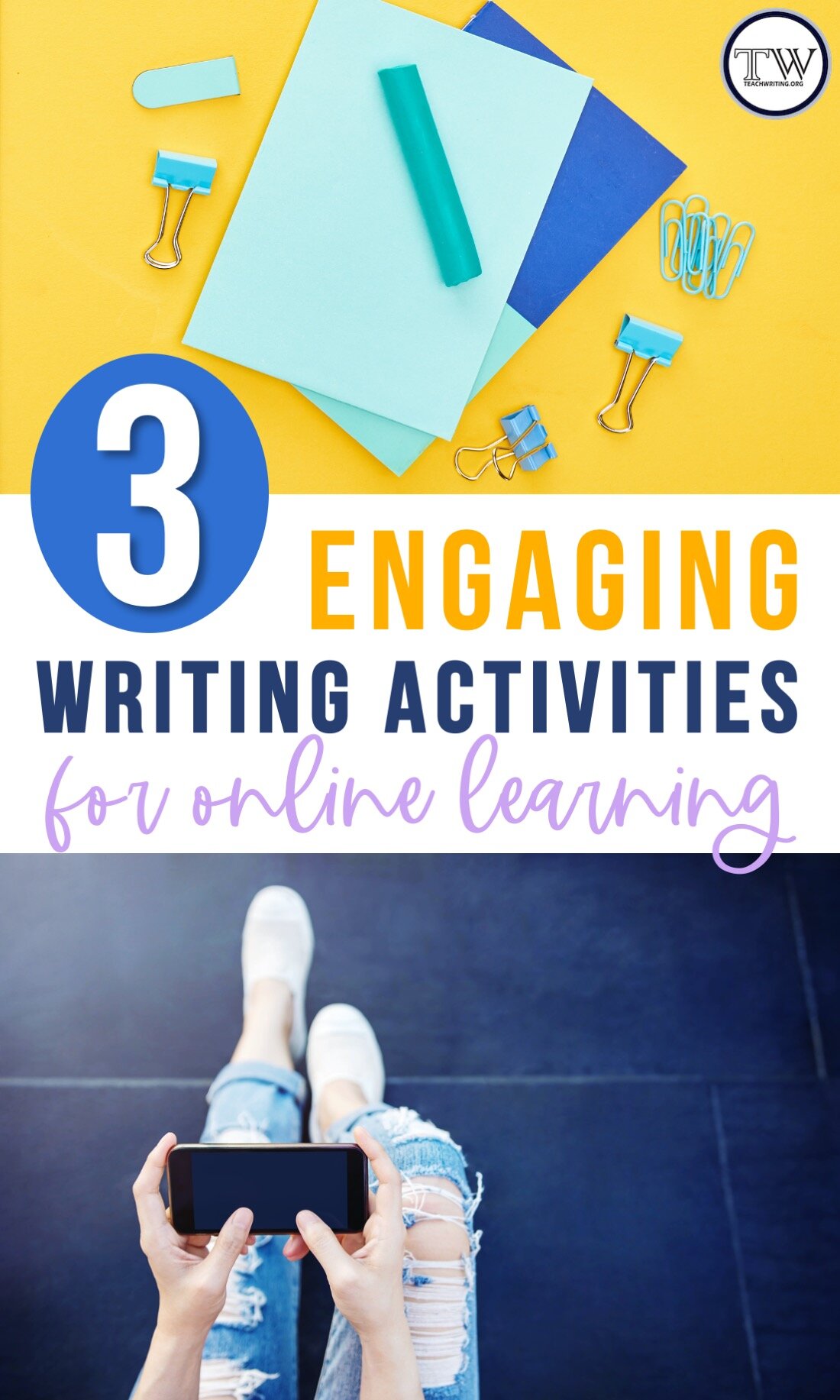Digital Writing Activities Students Actually Want to Complete
Distance learning at the end of second semester. That’s quite the challenging combination for middle and high school students! Many of them are already reluctant writers. Combine that with the inherent challenges of virtual learning, and we really do have a difficult task of engaging them. In this post, you’ll find three different digital writing activities students actually want to complete!
1. WRITING PROCESS WITH A SENTENCE
The writing process doesn’t always stick for students. One major reason, I believe, is because when we teach it in the context of an essay, it’s too drawn out for students to really put all the pieces together. What are the benefits of teaching the writing process with a sentence?
Reduce overwhelm.
Focus on quality, not quantity.
Chunk writing and its stages out over a week. This helps students understand the writing process without becoming frustrated!
Give yourself time to provide helpful feedback. And, with one sentence, it’s so manageable!
Transfer skills from an isolated sentence to an entire essay.
Basically, what are the disadvantages? None. That is all.
All joking aside, students really do need time to breathe with writing. Just as we use picture books and short mentor texts as a concise way to model reading strategies for students, we need to use short writing assignments to model the writing process.
Doing so helps build confidence. Whether we do that at the beginning of the year, before a large essay, or as a recap at the end of the year, the writing process is important. Students need to see it played out. One day doesn’t cut it, and one month can be too long, but a week of chunked practice is the Goldilocks serum.
2. PLAYLIST OF MY (?)
Year? Month? Season? Life? Novel? Insert your own time period as necessary!
What’s more engaging than music? It’ll do the trick for older students - even in December or May. We can combine elements of grammar, theme, and reflection by asking students to create playlists.
Music can transform a boring lesson into a much more powerful one.
After identifying songs that are fitting for students’ playlists (be it a playlist of their year, their semester, or a special time period), we can engage students with discussions. What songs did they select? What theme do the songs all have in common? Which grammatical elements were the easiest or most challenging to incorporate?
Musical playlists allow us to differentiate for students. We can alter the number of songs, the number of connections, the type of grammar to be incorporated, and the length of the extended response, for example.
Teaching virtually? Have students post their playlist theme and favorite songs on FlipGrid or Padlet, and encourage other students to respond!
This Playlist of My Year assignment is popular with middle and high school students. Play students’ tune selections as they work, and let them share with peers!
Read more about using this assignment to engage middle and high school students in meaningful writing in this blog post.
3. EMAIL ETIQUETTE
At first, it was emails from students about missing assignments and grades. More recently, it’s been emails during school closings due to COVID-19. Regardless, emails are becoming a more popular way for teachers and students to communicate.
It’s not surprising.
Emails are a ubiquitous element of twenty-first century communication. Yet, the ability to email professionally is not inherent. We must teach students how to handle their questions, concerns, and frustrations eloquently. Generally, when I speak with a student about an inappropriate tone in an email, they are surprised. They just haven’t been taught!
Luckily, students enjoy responding to scenarios and having an authentic audience. Students can write thank you letters, show appreciation to teachers or coaches, write words of encouragement, and express concerns…whatever is weighing on their minds and hearts.
We can engage students with humor - with good examples and bad examples of how to communicate online. We can hyperbolize reality to make their learning sticky and keep them coming back for more.
Consider having students participate in an email etiquette unit (this is the one you’ll need if you want a distance learning Google Drive version) if you want to sneak in some writing practice that doesn’t feel like work! My students have never walked away disappointed.
The best part? Hearing teacher friends tell me how much they enjoy receiving well-articulated emails from students. It’s a writing unit that shows visible growth and keeps on giving.
Read more about the invaluable lesson of email etiquette - how we can approach it and why it’s game changing - in this post.
Whether you’re teaching students virtually or trying to win over reluctant writers, these three writing lessons are sure to help you deliver both in growth and engagement with middle and high school students.
When you’re not sure what to do and students are fading, go back to the basics. Build confidence, chunk the learning experience, and tie in authentic audiences for the ultimate writing experience.
RELATED ARTICLES:
Get Your Students to Read Like a Writer (Teach Between the Lines)
5 Alternatives to the Traditional Essay (Bespoke ELA)
Creative Writing Activities for High School (Language Arts Classroom)
ABOUT THE AUTHOR
Melissa is the author of Reading and Writing Haven and a collaborative blogger on Teachwriting.org.
A middle and high school English teacher for over a decade now turned instructional coach, Melissa is an avid reader and writer, and she loves sharing ideas and collaborating with fellow educators. Melissa use her degrees in English, Curriculum & Instruction, and Reading as well as her Reading Specialist certification to ponder today’s educational issues while developing resources to help teachers, students, and parents make learning more relevant, meaningful, and engaging.
Visit Melissa on Instagram, Facebook, or Twitter for English teacher camaraderie and practical, engaging teaching ideas.






